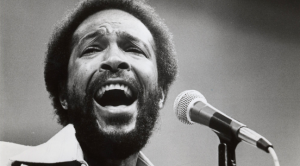
Ah, Sexual Healing by Marvin Gaye. Now that’s a song that evokes a whole tapestry of emotions, doesn’t it? Released in 1982 on his album Midnight Love, it became a cultural touchstone, a sonic exploration of intimacy, and a testament to Gaye’s enduring artistry. But to truly appreciate Sexual Healing, we need to delve deeper, understanding the context of its creation and the complex life of the man behind the microphone.
Background
By the early 1980s, Marvin Gaye was a far cry from the fresh-faced Motown star who delivered hits like “What’s Going On” and “Ain’t No Mountain High Enough.” Personal struggles with addiction, a tumultuous divorce, and a self-imposed exile in Europe had left him searching for peace. It was during this period, in the seaside town of Ostend, Belgium, that the seeds of Sexual Healing were sown.
The exact origins of the song are shrouded in a bit of mystery. Some accounts, like that of music critic David Ritz, claim Gaye was inspired by sadomasochistic imagery, seeking a deeper connection through pain and pleasure. However, Gaye’s closest confidants dispute this, suggesting the core message was far more hopeful. Regardless of the inspiration, one thing is certain: Sexual Healing became a vehicle for Gaye to explore intimacy not just as physical gratification, but as a source of emotional and spiritual rejuvenation.
Now, let’s turn our attention to the music itself. Sexual Healing marked a departure from Gaye’s earlier soul stylings. Here, we hear the influence of burgeoning electronic music. The iconic, pulsating bassline is courtesy of the Roland TR-808, a drum machine that would become synonymous with 80s R&B. Layered over this foundation are shimmering synthesizers and a hypnotic melody, all cradling Gaye’s unmistakable vocals.
Gaye’s performance in Sexual Healing is simply masterful. His voice, at times a whisper, at times a soaring plea, conveys a yearning for connection, a vulnerability that resonates deeply with the listener. The lyrics themselves are deceptively simple, using metaphors of water and light to paint a picture of emotional and physical release. Lines like “Let’s Marvin, let’s find religion in the rhythm” and “Sexual healing, is mental healing” blur the lines between physical intimacy and a deeper sense of wholeness.
Sexual Healing was a critical and commercial success. It reached number one on the Billboard R&B chart and became a staple on radio stations nationwide. However, it also courted controversy for its frank exploration of sexuality. Yet, the song’s enduring appeal lies in its ability to transcend categorization. It’s more than just a “sexy” song; it’s a plea for connection, a testament to the power of human intimacy to heal the wounds of the soul.
In conclusion, Sexual Healing stands as a landmark achievement in Marvin Gaye’s career. It’s a song that continues to resonate with listeners across generations, a testament to Gaye’s enduring genius and his unwavering pursuit of emotional truth.